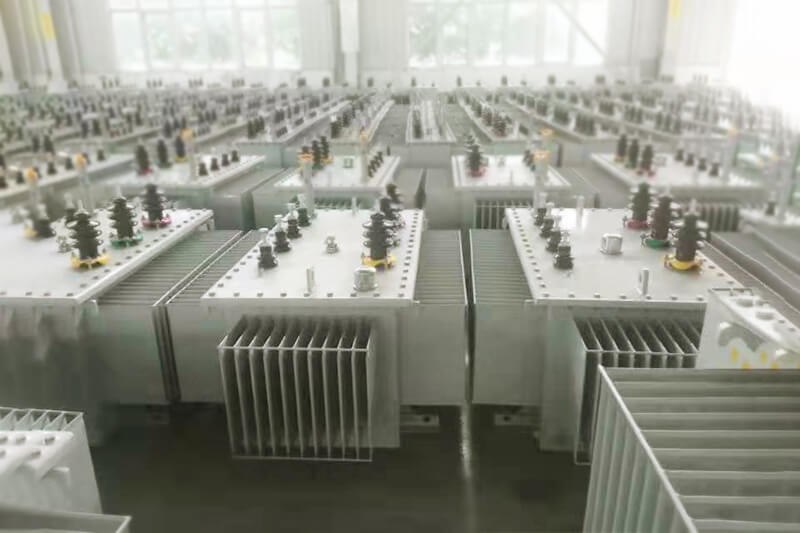Oil-immersed transformers are widely used in power transmission and distribution systems due to their high efficiency, excellent insulation performance, and long service life. One of the most important considerations when selecting an oil-immersed transformer is its voltage level. Different voltage levels directly determine the transformer's application scenarios, operational efficiency, insulation structure, and even overall cost.
This article provides a comprehensive overview of the voltage levels commonly used in oil-immersed transformers, along with their respective advantages and disadvantages. Whether you are an engineer, procurement officer, or project planner, this guide will help you make an informed decision when selecting a transformer for your application.

What Is Voltage Level in an Oil-Immersed Transformer?
The voltage level of a transformer refers to the rated input (primary) and output (secondary) voltages it is designed to handle. For oil-immersed transformers, common voltage levels include:
Low Voltage: ≤1kV
Medium Voltage: 3.3kV, 6kV, 10kV, 11kV, 20kV
High Voltage: 35kV, 66kV, 110kV
Extra High Voltage: ≥220kV
Ultra High Voltage: ≥500kV
Low Voltage Oil-Immersed Transformers (≤1kV)
Applications:
Residential buildings, commercial areas, small industrial workshops
Advantages:
Cost-effective, simple design, easy maintenance
Disadvantages:
High transmission loss, limited capacity
Medium Voltage Oil-Immersed Transformers (3.3kV to 20kV)
Common Ratings:
6kV / 10kV (Asia), 11kV (Europe, India), 20kV (high-efficiency grids)
Applications:
Industrial plants, data centers, utility substations, infrastructure
Advantages:
Balanced cost and performance, improved efficiency, standardized availability
Disadvantages:
Higher insulation needs, increased size and cost
High Voltage Oil-Immersed Transformers (35kV to 110kV)
Applications:
Regional grids, industrial zones, renewable energy integration
Advantages:
Efficient long-distance transmission, large capacity, grid stability
Disadvantages:
High cost, special maintenance, complex logistics
Extra High and Ultra High Voltage Transformers (≥220kV)
Applications:
National power transmission, HVDC projects, interregional energy transfer
Advantages:
Minimal losses, high capacity, grid stability
Disadvantages:
Extremely high cost, complex design and maintenance, large site needs

How to Select the Right Voltage Level?
Choosing the appropriate voltage level for your oil-immersed transformer depends on several key factors:
| Selection Factor | Recommended Voltage Range |
|---|---|
| Load Size | Small (<100kVA): LV; Medium (100–2000kVA): MV; Large (>2000kVA): HV/EHV |
| Transmission Distance | Short: LV/MV; Medium: MV/HV; Long: HV/UHV |
| Grid Standards | Follow local standards (e.g., 10kV China, 11kV India) |
| Budget | LV/MV for low budget; HV/UHV for long-term ROI |
| Application Scenario | Buildings: LV; Factories: MV; Utilities: HV/UHV |
Voltage Conversion and Transformer Design
Oil-immersed transformers use winding turns ratio to convert voltage between primary and secondary sides. Voltage levels affect several critical design aspects:
Core Design: Higher voltage levels require larger magnetic cores and enhanced electromagnetic shielding.
Insulation System: Voltage level dictates the use of better insulation materials such as high-grade oil, insulation paper, and cooling design.
Cooling Method: For low and medium voltage transformers, ONAN (Oil Natural Air Natural) is typically used. For high or ultra-high voltage, advanced cooling like ONAF (Oil Natural Air Forced) or OFAF (Oil Forced Air Forced) is necessary.
Understanding the differences between various voltage levels in oil-immersed transformers is crucial for designing safe, stable, and efficient power systems. Each voltage grade has specific application advantages and trade-offs that must be carefully evaluated.
By matching transformer voltage levels with system requirements, users can achieve optimal energy efficiency, reduce operational costs, and ensure long-term reliability. Whether you're dealing with a residential load or a regional power grid, proper voltage selection is the first step toward a successful power distribution strategy.









Leave A Comment